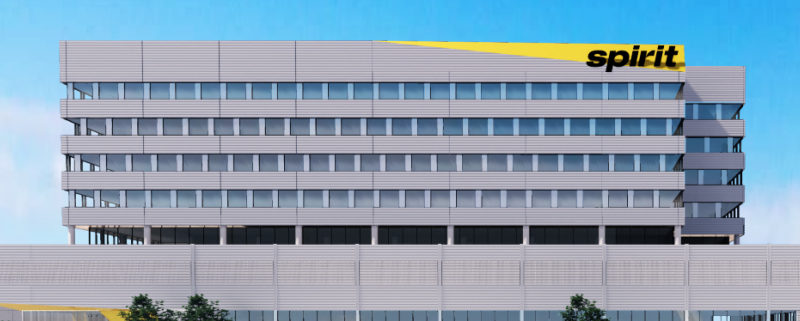Monthly home rents are rising sharply across South Florida, with some communities seeing as much as a 34% annual increase in December compared with a year ago.
While locals largely blame the wave of newcomers to the Miami and Fort Lauderdale areas, experts say there are solutions: build more apartments priced affordably for the working class and companies should boost wages.
Residents here are contending with the perfect storm. There’s been a steady migration in the pandemic of people coming from states with higher wages and cost of living who view Miami apartments as a deal, many firms are relocating to South Florida and there’s a pipeline of apartment buildings where rents range from $1,800 a month to $2,800 for studios and one-bedroom units.
“We have had very few affordable apartments,” said Jack McCabe, owner of McCabe Research & Consulting, a real estate and economic research firm in Deerfield Beach. “People (from the Northeast and Midwest) consider $2,200 for an apartment a great deal compared to where they are coming from. They also have more cash in the bank than people in Miami do. People in Miami can’t afford this, because their salaries are not going up as high.”
Zillow, an online real estate marketplace, reported that rents rose annually in the tri-county area — Miami-Dade, Broward and Palm Beach counties — to an average of $2,564 in December, up 30%. Real estate brokerage Redfin said in Miami apartment price tags soared year over year to an average of $3,020 monthly in December, a 34% jump.
South Florida’s annual rent hikes exceeded that of New York City and Atlanta, but the asking rates fell in the middle. According to Zillow, New York City had an average rent of $2,772 in December, up 16% from a year ago. Atlanta had an average rent of $1,882, up by 22%.
Rent increases show zero signs of subsiding in this region, experts say.
McCabe said people living in older rental homes also are seeing price increases of 8% to 12% a year.
“It’s still significant, because their income hasn’t gone up 8% to 12%,” he said. “Many people are struggling with their housing cost. Many are paying 50% (of incomes) for their housing expenses. It leaves little or nothing for a car, vacation, kids or even playing a round of golf. It has cut into their lifestyle.”
On the other hand, the area’s home sales market provides little relief to prospective buyers, with steady price increases for houses and condominiums. Miami-Dade County has a median sales price now of $525,000 for houses and $355,000 for condos, while Broward has a median sales price of $500,000 for houses and $236,000 for condos.
Inventory of homes for sale is limited, too. Miami-Dade has two months of supply of houses to buy, and 3.3 months of condos. Broward has 1.1 months of houses on the market, and 1.7 months of condos. A balanced housing market typically consists of six to nine months of inventory for sale.
“For now, buyers are showing up to a store where the shelves have been picked clean and the buyers are fighting over the last loaf of bread,” said Jeff Tucker, a senior economist at Zillow.
Priced-out buyers in Miami will continue to rent, experts say. Many will look to live in the urban core, including Brickell, downtown and Edgewater, where many firms are opening offices. The urban core is experiencing a resurgence of activity in recent months after renters exited these neighborhoods early in the pandemic that began in March 2020, to find homes with more square footage and green space.
Experts say to alleviate the burden of higher rents on consumers more development of affordable and workforce housing and wage increases are necessary. McCabe said the Miami area needs 40,000 affordable housing units, thousands more than what’s in the pipeline in Miami-Dade and the city of Miami.
The reality is expect more transplants coming to South Florida, said Jeff Andrews, a data journalist at online real estate marketplace Zumper, and that means more rent increases this year.
“You still have a housing shortage and renters are still looking to move to their new pandemic reality, because they didn’t in 2020,” Andrews said. “Homeowners did. Renters don’t have the capacity to pick up and move whenever they want. They have to wait, plan for a deposit and save up.”
The list of expected newcomers includes 29-year-old Keyao Pan, a Florida International University history professor. After completing a yearlong post doctorate fellowship at Harvard University, Pan will relocate to Miami this summer.
“FIU is a great place, it does a lot of research,” said Pan, who holds a doctorate from University of Chicago. “I can count myself very lucky, because I know people who had a 10-year gap when they graduated and then they had a stable job.”
He pays $1,400 a month for a 700-square-foot studio apartment in Cambridge, below the $3,637 monthly average for a one bedroom in the Boston area, according to a December Redfin rental report. He hopes to find a 1,000-square-foot, one-bedroom unit for $1,500 a month near the FIU main campus in west Miami-Dade or in nearby Doral. If he can swing it, Pan said, he wants to buy a home with family help for less than $350,000.
“Both Chicago and Cambridge have a higher cost of living,” he said. “Miami is still more affordable than places in the Northeast. It is a growing market.”
Also, investors are swooping in to Miami and Fort Lauderdale areas, buying condo units and then getting high monthly rents for them. South Florida renters may finally get price relief in 2023, McCabe said. That’s because home sellers in the Northeast looking to move south may have a tough time unloading their houses or condos, because they will follow so many people from that region that already have exited, he said.
“The big question,” McCabe said, is “will we see more people moving to South Florida” in 2023 to keep boosting apartment rents.
Source: Miami Herald










